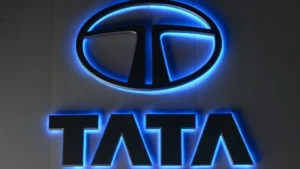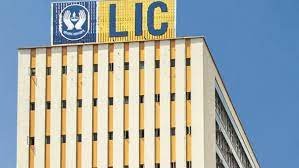Life Insurance Corporation extend its MPS target to 25%
Life Insurance Corporation (LIC) has secured a remarkable 10-year exemption from the Department of Economic Affairs in relation to its Minimum Public Shareholding (MPS) target. This pivotal decision affords LIC the unique opportunity to extend its MPS target to 25% by May 2032, a strategic move following its historic Initial Public Offering (IPO) in May 2022.
The significance of this exemption cannot be overstated, as it provides LIC with a considerable window to recalibrate its shareholding structure amidst evolving market dynamics. The MPS target, a regulatory requirement mandating the minimum percentage of a company’s shares to be held by the public, is a critical parameter that influences market transparency and investor participation.
The regulatory backdrop against which LIC’s exemption unfolds reflects a dynamic environment where financial authorities recognize the need for flexibility to navigate unique circumstances. The Department of Economic Affairs’ decision underscores a pragmatic approach, acknowledging LIC’s stature in the financial domain and its strategic importance in the broader market.
LIC’s Stock Market Debut:
LIC’s IPO in May 2022 marked a historic milestone, drawing attention to the insurer’s transition from a state-owned entity to a publicly traded company. The 10-year exemption aligns with this transformative phase, allowing Corporation to chart its course in the market with an extended timeline for achieving the stipulated MPS target. This flexibility is crucial for Life Insurance Corporation to strategically adjust its portfolio and make informed market moves, ensuring a balanced and well-paced transition.
As Life Insurance Corporation leverages this exemption to shape its shareholding structure and market positioning, stakeholders will keenly observe the insurer’s strategic decisions and market maneuvers. The next decade will undoubtedly be a critical period for them, marked by a nuanced interplay of regulatory adjustments, market performance, and the insurer’s specific moves in response to the evolving financial landscape.
Their IPO in May 2022 was a watershed moment, raising an impressive ₹21,000 crore. However, despite the grandeur of its stock market entry, Corporation’s shares have faced challenges, currently trading at ₹815, which is 15% below its IPO price of ₹949. The Securities and Exchange Board of India (SEBI) had introduced a rule modification in 2021, impacting companies with a post-issue market capital exceeding ₹100,000 crore. Life Insurance Corp. fell under this category, necessitating compliance with a 10% public shareholding requirement within two years and achieving 25% within five years from the date of listing.
SEBI’s Regulatory Adjustments:
The regulatory landscape played a crucial role in Corporation’s recent exemption. SEBI’s stringent rules, designed to ensure broader public participation in the stock market, initially mandated Life Insurance Corporation to reach a 25% MPS by 2027. However, the government, exercising its authority, signaled the potential exemption of listed public sector enterprises from MPS norms, directly affecting LIC. The 10-year extension granted aligns LIC’s deadline with May 2032, providing the insurance giant with a more flexible timeline for meeting the public shareholding requirements.
Market Performance and Investor Sentiment:
Despite the challenges, LIC’s shares have shown resilience in recent times. Over the last month, their shares witnessed a notable 35% increase, with December alone contributing over 20% to this surge. This month stands out as LIC’s best since its IPO in May 2022. Investors have seen substantial returns, with the stock gaining 32% in the last month, 25% in the past six months, and delivering an 18% return over the entire year. The government’s current stake in Life Insurance Corporation stands at 96.5%, reflecting its dominant position in the insurance behemoth.
Stake in Tata Motors and Dixon Technologies:
 Beyond the regulatory landscape and market dynamics, Life Insurance Corporation has strategically adjusted its portfolio, particularly in its holdings in Tata Motors Limited and Dixon Technologies India Limited. In a recent disclosure, They revealed a reduction in its stake in Tata Motors from 5.110% to 3.092% of the company’s paid-up capital. This reduction, representing a 2.018% decrease between August 28, 2015, and December 18, 2023, is noteworthy. The accompanying details reveal that Life Insurance Corporation’s equity shares decreased from 169,802,847 to 102,752,081 during this period, with an average cost of acquisition at Rs 711.65.
Beyond the regulatory landscape and market dynamics, Life Insurance Corporation has strategically adjusted its portfolio, particularly in its holdings in Tata Motors Limited and Dixon Technologies India Limited. In a recent disclosure, They revealed a reduction in its stake in Tata Motors from 5.110% to 3.092% of the company’s paid-up capital. This reduction, representing a 2.018% decrease between August 28, 2015, and December 18, 2023, is noteworthy. The accompanying details reveal that Life Insurance Corporation’s equity shares decreased from 169,802,847 to 102,752,081 during this period, with an average cost of acquisition at Rs 711.65.
Additionally, Life Insurance Corporation reported a decrease in its shareholding in Dixon Technologies India Limited from 5.012% to 3% of the paid-up capital. This reduction, translating to a decrease from 29,97,913 to 17,94,395 equity shares, underscores their strategic portfolio adjustments.
Life insurance corporation’s 10-year exemption for Minimum Public Shareholding comes at a crucial juncture, providing the insurance giant with a strategic window to navigate market challenges and adjust its portfolio. The regulatory adjustments, market performance, and their specific moves in Tata Motors and Dixon Technologies contribute to a nuanced understanding of the current financial landscape. As corporation continues to evolve in the ever-changing market dynamics, stakeholders will keenly observe its strategic decisions and market maneuvers in the coming years











Comments 1